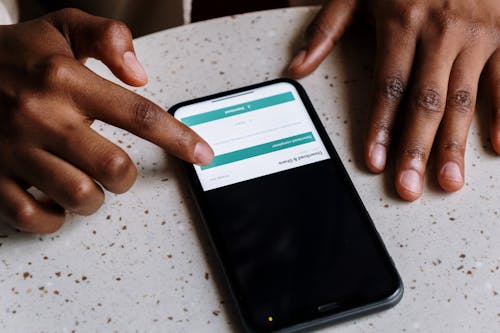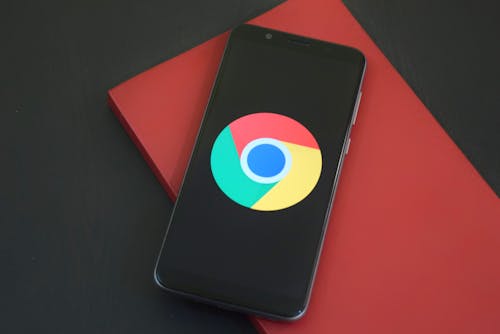

Importance of Mobile Optimization
Statistics on mobile usage and traffic can give you a clear picture of why optimizing your website for mobile users is crucial. Did you know that about 52% of internet traffic comes from mobile devices? That's more than half of all online activity happening on smartphones and tablets!
In today's fast-paced world, people are constantly on the go, relying on their mobile devices to access information, shop, and connect with others. Ignoring the mobile user experience means missing out on a significant portion of your potential audience. By understanding these statistics, you can see the immense opportunity in catering to mobile users effectively.
Whether it's improving load times, ensuring responsive design, or enhancing user interface, optimizing for mobile can lead to increased engagement, traffic, and ultimately, conversions. When your website is optimized for mobile users, it's like rolling out a digital red carpet for your visitors.
Imagine navigating a site seamlessly on your phone without constantly pinching and zooming to read text or struggling to tap tiny buttons. That's the magic of mobile-friendly design! The impact of mobile-friendly design on user experience is huge. It's all about making your visitors feel welcome and valued by providing a smooth and enjoyable browsing experience.
When your website is responsive and adapts beautifully to different screen sizes, users are more likely to stick around and explore what you have to offer. Not only does mobile optimization make it easier for users to find what they need quickly, but it also boosts credibility and trust in your brand.
Think about it - if a website looks outdated or is a nightmare to navigate on a mobile device, users may bounce off faster than you can say "responsive design." So, by investing in a mobile-friendly design, you're not just improving the technical aspects of your website; you're also enhancing the overall user experience, which can lead to increased engagement, conversions, and ultimately, happy customers.
Best Practices for Mobile Optimization
 Responsive web design is a crucial aspect of optimizing your website for mobile users. Essentially, it involves creating a website that can adapt and display properly on any device, whether it's a smartphone, tablet, or desktop computer.
Responsive web design is a crucial aspect of optimizing your website for mobile users. Essentially, it involves creating a website that can adapt and display properly on any device, whether it's a smartphone, tablet, or desktop computer.
By implementing responsive design, you ensure that your site looks good and functions well on various screen sizes, resolutions, and orientations. One major benefit of responsive design is that it eliminates the need to create separate versions of your website for different devices. Instead, you can have a single site that automatically adjusts its layout and content based on the user's device.
This not only saves time and effort in development but also provides a consistent user experience across all platforms. Additionally, responsive design is favored by search engines like Google, as it simplifies the process of crawling and indexing your site. It also helps with mobile SEO, as Google's algorithm gives preference to mobile-friendly websites in mobile search results.
Incorporating responsive web design into your website not only caters to the needs of mobile users but also future-proofs your site as new devices with varying screen sizes continue to emerge in the market. It's a fundamental step towards creating a user-friendly and accessible experience for all visitors, regardless of the device they use to access your site.
When it comes to optimizing images and media for mobile, you want to ensure that the visual elements on your website are not only eye-catching but also load quickly and look great on smaller screens. One key strategy is to resize and compress images specifically for mobile devices.
Large, high-resolution images can slow down loading times, which can be frustrating for mobile users. By resizing images to fit the dimensions of mobile screens and using compression techniques to reduce file sizes without sacrificing quality, you can improve the overall performance of your website on mobile devices.
Additionally, consider using formats such as WebP or JPEG XR, which offer better compression and faster loading times compared to traditional formats like PNG or JPEG. Remember, optimizing images and media for mobile is essential for creating a seamless and enjoyable user experience on smartphones and tablets.
When it comes to optimizing your website for mobile users, choosing the right fonts and text sizes is crucial. Mobile-friendly fonts are easy to read on smaller screens, ensuring a better user experience. You want to select fonts that are clear and legible, even on a tiny smartphone screen. Opt for clean, sans-serif fonts like Arial, Open Sans, or Roboto, which are designed to be easily readable on mobile devices.
Additionally, ensure that your text sizes are large enough to be comfortably read without users having to zoom in. Aim for a font size of at least 16 pixels for body text to enhance readability. Larger font sizes are especially important for headings and important information to grab users' attention quickly.
By utilizing mobile-friendly fonts and text sizes, you can make sure that your content is easily accessible and readable on any device, leading to a more positive user experience and potentially higher engagement rates.
Mobile Testing and Performance Optimization
 When it comes to optimizing your website for mobile users, testing on various devices and screen sizes is a crucial step. Imagine this: your website looks fantastic on your own smartphone, but when someone views it on a tablet or a different brand of phone, it's a jumbled mess. That's why testing on a range of devices and screen sizes is key.
When it comes to optimizing your website for mobile users, testing on various devices and screen sizes is a crucial step. Imagine this: your website looks fantastic on your own smartphone, but when someone views it on a tablet or a different brand of phone, it's a jumbled mess. That's why testing on a range of devices and screen sizes is key.
Each device has its own specifications and quirks, and what may work perfectly on one might not translate well to another. By testing on different devices, you can ensure that your website looks and functions as intended, providing a consistent user experience no matter how visitors access your site. Remember, variety is the spice of mobile optimization!
When it comes to ensuring that your website looks and functions as intended on various mobile devices, having the right tools can make a world of difference. There are several user-friendly tools available that can help you test the responsiveness of your site across different screen sizes and resolutions.
One popular tool is Google's Mobile-Friendly Test, which allows you to enter your website's URL and see how it appears on mobile devices. This tool provides detailed feedback on any issues that may be affecting your site's mobile responsiveness, giving you valuable insights on areas that need improvement.
Another handy tool is BrowserStack, a platform that enables you to test your website on real mobile devices and browsers, rather than relying solely on simulations. With BrowserStack, you can interact with your site just as a user would, helping you identify any usability issues specific to mobile devices.
Utilizing these tools can help you identify and address any responsiveness issues, ensuring that your website provides a seamless experience for all mobile users. When it comes to improving website performance on mobile devices, there are a few key techniques you can implement to ensure a seamless user experience.
One effective strategy is to optimize your images and videos for mobile. Large file sizes can slow down loading times, so compressing images and videos without compromising quality can make a significant difference. Additionally, leveraging browser caching can help speed up loading times for returning visitors by storing certain elements locally on their device.
Another important aspect is to minimize the use of unnecessary plugins and scripts that can bog down your site on mobile devices. By streamlining your website's code and reducing the number of external calls, you can improve performance and create a smoother browsing experience for mobile users.
Furthermore, consider implementing lazy loading for images and videos, which allows content to load as users scroll, reducing initial loading times. Overall, prioritizing these performance optimization techniques can enhance user satisfaction and increase engagement on your mobile website.
Mobile SEO Strategies
Mobile SEO is like giving your website a spotlight in the crowded online arena. Think about it - when users search for something on their mobile phones, they're bombarded with options. If your site isn't optimized for mobile SEO, it's like standing in the dark while others shine bright. Mobile SEO is all about making sure your website appears higher in search engine results when people search using their smartphones or tablets.
This visibility can lead to more traffic, more leads, and ultimately more conversions for your business. With the increasing number of mobile users, it's crucial to prioritize mobile SEO to stay ahead of the competition.
By implementing mobile SEO strategies like mobile-friendly content, optimized meta tags, and fast loading speeds, you can improve your website's visibility and attract more visitors who are actively searching on mobile devices.
When it comes to optimizing content for mobile search, you want to make sure your website is easy to navigate and loads quickly on mobile devices. One tip is to focus on creating concise and engaging meta descriptions that effectively summarize your webpage content. This is crucial because mobile users often skim search results quickly.
Additionally, incorporating relevant keywords and phrases in your content is essential for mobile SEO. Think about how users might search for your products or services on a mobile device and tailor your content accordingly. Make sure your headlines are attention-grabbing and descriptive, helping users understand what the page is about at a glance. Including structured data markup can also enhance your mobile search presence by providing search engines with more context about your content. By following these tips, you can improve your website's visibility and relevance in mobile search results.
When it comes to optimizing your website for mobile users, leveraging local SEO can make a big difference. Local SEO is all about enhancing your online visibility for local searches, which is crucial for mobile users on the go. By focusing on local keywords, creating location-specific content, and ensuring your business information is accurate and consistent across online directories, you can attract nearby customers who are searching for products or services like yours on their mobile devices.
 Additionally, optimizing your Google My Business listing and encouraging customer reviews can further boost your local SEO efforts and help mobile users find and connect with your business easily. Overall, incorporating local SEO strategies into your mobile optimization plan can significantly improve your online presence and drive more traffic to your website from local mobile users.
Additionally, optimizing your Google My Business listing and encouraging customer reviews can further boost your local SEO efforts and help mobile users find and connect with your business easily. Overall, incorporating local SEO strategies into your mobile optimization plan can significantly improve your online presence and drive more traffic to your website from local mobile users.
User Experience and Mobile Conversion
Simplifying navigation for a better user experience is like creating a clear path for your website visitors You want them to easily find what they're looking for without getting lost in a maze. Think about it: on a smaller screen like a mobile device, cluttered menus and complex navigation can frustrate users and drive them away from your site.
By streamlining your menu options and making sure key sections are easily accessible, you're not only enhancing user experience but also increasing the likelihood of conversion. Imagine strolling through a well-organized store where everything is neatly labeled and easy to find – that's the kind of experience you want to provide on your mobile website.
Keep it simple, intuitive, and user-friendly, and your visitors will thank you with their time and attention. When it comes to optimizing your website for mobile users, paying attention to call-to-action (CTA) buttons is crucial for driving conversions.
On mobile screens, space is limited, so make sure your CTAs are prominently displayed and easily accessible. Use clear and concise language that clearly conveys the action you want users to take. Consider the placement of your CTAs within the mobile layout, ensuring they are strategically positioned for maximum visibility and ease of use.
Additionally, using contrasting colors or design elements can help make CTAs stand out and attract user attention. Remember that mobile users often have short attention spans, so make sure your CTAs are compelling and encourage immediate action. Testing different variations of CTAs can help you identify which designs and messaging are most effective in prompting mobile users to convert.
By optimizing your CTAs for mobile conversions, you can improve user engagement and drive meaningful interactions on your website. Fast loading speeds are crucial for mobile users because let's face it, nobody likes to wait around for a website to load, especially on their phone. In today's fast-paced world, people expect instant access to information at their fingertips.
If your website takes too long to load on mobile devices, you risk losing potential visitors and customers. Mobile users are typically on the go, and they want information quickly and efficiently. A slow-loading website can frustrate users, leading them to abandon your site and seek faster alternatives. Moreover, search engines like Google also prioritize fast-loading websites in their rankings, so optimizing your site for speed can improve your SEO performance. By ensuring fast loading speeds for mobile users, you not only enhance the user experience but also increase the likelihood of retaining visitors and driving conversions.